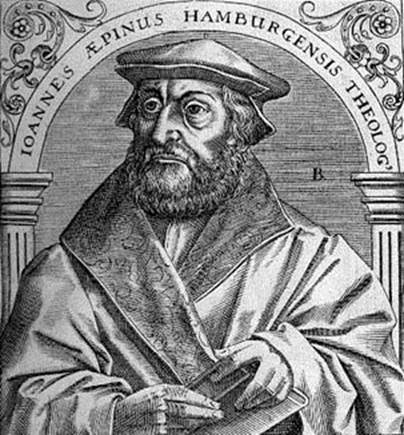
Franz Maria Ulrich Theodosius Aepinus
 المؤلف:
J L Heilbron
المؤلف:
J L Heilbron
 المصدر:
Biography in Dictionary of Scientific Biography
المصدر:
Biography in Dictionary of Scientific Biography
 الجزء والصفحة:
...
الجزء والصفحة:
...
 23-3-2016
23-3-2016
 2186
2186
Born: 13 December 1724 in Rostock, Mecklenberg-Schwerin (now Germany)
Died: 10 August 1802 in Dorpat, Russia

Franz Aepinus was born in Rostock where his father was the Professor of Theology at the University. He came from a famous family of theologians who were originally named Hoeck or Hoch but Franz's great-grandfather had changed the family name to its Greek form.
Aepinus studied medicine and mathematics at the universities of Jena and Rostock. He was awarded an MA from Rostock for a dissertation on the paths of falling bodies in 1747. He remained at Rostock, teaching mathematics there until 1755. During this period he undertook research in several different areas of mathematics including algebraic equations, solving partial differential equations, and on negative numbers.
Franz was not the only member of the family to be teaching at Rostock during this period, for his elder brother also taught oratory at the University. One of his brother's students, J C Wilcke, took courses given by Franz during 1751-52 and was attracted to a career in mathematics and physics instead of the clerical career that he had been intending to pursue when he entered the university. If Franz had a major effect on Wilcke's career, then the reverse was true a few years later when Wilcke was to suggest problems which led to the most important work of Aepinus's career.
In 1755 Aepinus became director of the Observatory in Berlin and he was elected to the Berlin Academy. Director of a major observatory may seem a strange appointment given that Aepinus' mathematical interests seemed far removed from astronomy. However, Heilbron writes in [1]:-
These appointments were apparently merely a device for establishing Aepinus, who had begun to acquire a reputation, in Frederick's capital: he was neither especially interested nor experienced in astronomy, and his closest published approach to the subject during his Berlin sojourn was amathematical analysis of a micrometer adapted to a quadrant circle.
Euler was working at the Berlin Academy during the time that Aepinus worked there, and in fact Aepinus lived in Euler's house for the two years that he was in Berlin.
Although Aepinus did not make contributions to astronomy while in Berlin, he did his most important work there. Wilcke had moved to Berlin with Aepinus and was writing a dissertation on electricity. Wilcke showed Aepinus the mineral tourmaline, a borosilicate mineral often used as a gem. Tourmaline has piezoelectric properties which means that it can generate electric charge when mechanical stress is applied and can change its shape when voltage is applied to it. Aepinus studied the state of electrical polarisation produced in tourmaline and various other crystals by a change of temperature. The electrical properties of the tourmaline seemed to Aepinus to be similar to those of a magnet and he began to believe that electricity and magnetism were analogous.
Aepinus' study of electricity and magnetism led to the publication of his book Tentamen theoriae electricitatis et magnetismi (An Attempt at a Theory of Electricity and Magnetism) in 1759. It was the first work to apply mathematics to the theory of electricity and magnetism and [1]:-
... is one of the most original and important books in the history of electricity.
Before this work was published, however, Aepinus had moved to St Petersburg. In October 1756 he was offered a chair at the Academy in St Petersburg and he requested Frederick to release him from his contract in Berlin so that he could accept the post. Euler supported his request to Frederick and by early 1757 Frederick had agreed that Aepinus could end his duties in Berlin and accept the appointment in St Petersburg. Aepinus was to continue working in St Petersburg until he retired in 1798.
Aepinus certainly began his appointment in St Petersburg with the publication of his masterpiece and was held in high esteem by the scientists there [2]:-
Aepinus studied the relation between conductors and nonconductors, extended Benjamin Franklin's one-fluid theory of electricity, and explained virtually all electric induction in terms of the attraction, repulsion, and flow of electricity in conductors.
However, in 1760 he became an instructor for the Corps of Imperial Cadets and this left his little time to devote to his researches at the Academy. Despite continuing to publish on electricity and magnetism he was strongly attacked by Lomonosov who had been annoyed by Aepinus' [1]:-
... haughtiness towards Russian scientists and quick preferment at court ...
Other achievements of Aepinus include improvements to the microscope, and his demonstration of the effects of parallax in the transit of a planet across the Sun's disk (1764). However, except for his masterpiece on electricity and magnetism, his work was no better than competent. As an example of Aepinus's less good work, the authors of [4] relate that in 1763 Aepinus published in Latin in the Commentaries of the St Petersburg Academy a proof of the binomial theorem for real values of the exponent. The proof given by Aepinus, however, appears not to hold.
- J L Heilbron, Biography in Dictionary of Scientific Biography (New York 1970-1990).
http://www.encyclopedia.com/doc/1G2-2830900048.html
- Biography in Encyclopaedia Britannica.
http://www.britannica.com/eb/article-9003864/Franz-Maria-Ulrich-Theodor-Hoch-Aepinus
Articles:
- J Dhombres and M Pensivy, Esprit de rigueur et présentation mathématique au XVIIIème siècle : le cas d'une démonstration d'Aepinus, Historia Sci. 34 (1988), 21-42.
- J Dhombres and M Pensivy, Esprit de rigueur et présentation mathématique au XVIIIème siècle : le cas d'une démonstration d'Aepinus, Historia Math. 15 (1) (1988), 9-31.
- H Pupke, Franz Ulrich Theodosius Aepinus, Naturwissenschaften 37 (1950), 49-52.
 الاكثر قراءة في 1700to1749
الاكثر قراءة في 1700to1749
 اخر الاخبار
اخر الاخبار
اخبار العتبة العباسية المقدسة


